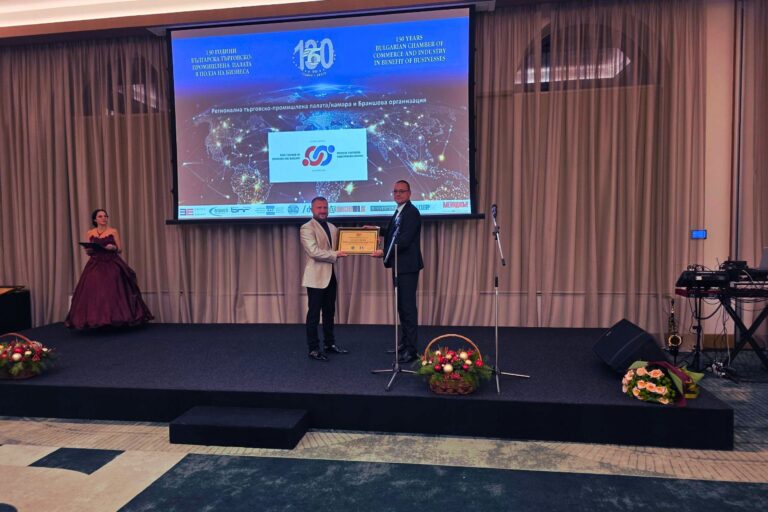Integrated Marketing: Combining Online and Offline Strategies
In today's world, where digital and traditional media continue to evolve, creating an effective marketing strategy requires the integration of online and offline initiatives. Integrated marketing is the process of combining different marketing techniques and channels into a coherent strategy that aims to deliver a consistent and compelling message to the target audience. This article explores how the various elements of marketing can be combined to create a comprehensive and effective strategy.
Steps to creating an integrated marketing strategy
Integrated marketing brings together different channels and techniques into a coordinated system where each part complements and reinforces the others. This coordination ensures that all marketing efforts work in unison, thereby increasing their overall impact. To develop a successful integrated marketing strategy, you must follow several key steps:
Understanding the target audience
At the heart of any successful marketing strategy is a deep and multifaceted understanding of your target audience. This is not simply a matter of demographics, such as age or income, but requires a more detailed understanding of a variety of factors that influence customer decisions.
First of all, the basic needs of customers must be understood. What problem does your product or service solve in the customer's life? What are their primary purchase motivations? The answers to these questions can provide valuable insights into how to approach your audience.
Next, you need to look at customer preferences. These can vary widely and include preferences for specific product features, communication channels and even brand elements. Understanding these preferences can help create more targeted and personalized marketing messages.
Customer behavior is also important. It includes everything from how they research and buy products to how they use the products or services after purchase. Understanding these behaviors can help you identify important touchpoints and moments of truth that are critical to the customer interaction.
Finally, the media habits of your target audience are essential in determining the most effective channels for delivering your marketing messages. In today's digitized world, this can include a combination of traditional and digital platforms. Understanding these habits is critical to maximizing reach and engagement.
All these aspects require a methodical approach and often the use of diverse data and analytical tools. From quantitative surveys and analytics to qualitative interviews and focus groups, each tool can provide valuable information about your target audience.
Creating a coherent message
Creating a unique and coherent message is like the art of orchestration, where each part must sound in harmony with the others to create an impressive symphony. Likewise in marketing, the message you broadcast must resonate with the same clarity and power across all channels and customer touchpoints. It is vital to building a strong brand and should reflect the core of your corporate identity, whether expressed through print advertising, social media, direct mail or personal selling.
This message should flow through all aspects of your marketing communication – from visual design to tone of voice, from advertising slogans to website content. It should be flexible enough to allow for creativity and personalization, but also rigorous enough to ensure that the brand's core messages and values are not lost or distorted.
Adapting your message to different platforms and audiences is just as important as keeping it consistent. You need to understand how your message will be perceived in different contexts and how to modify it to maximize its impact without compromising the brand's central message.
In any case, the key to creating a coherent message lies in its ability to communicate your brand's unique value proposition and create an emotional connection with customers. This message must be clear, easy to remember and, most importantly, genuine – so that when customers see your logo or hear your slogan, they immediately associate your brand with the desired quality, value or experience.
Using different channels
A successful integrated marketing strategy requires the effective use of multiple channels. This does not mean simply being present everywhere, but a strategic approach to choosing and optimizing the channels that best match the needs and preferences of your target audience. Social media, such as Facebook, Instagram and LinkedIn, offer opportunities for direct communication and engagement with customers, while SEO helps increase the visibility and reach of your online content.
Traditional channels such as television, radio and print media continue to be relevant, especially when it comes to reaching wider audiences or specific demographics. They are especially useful for building brand awareness and trust.
It is also important to consider the interaction between different channels. For example, a social media campaign can be linked to SEO-optimized online content, while a TV ad can direct viewers to a company's website or social media. Such coordination ensures that messages are consistent and efforts across channels are mutually supportive.
Optimizing each channel according to its unique characteristics and audience is also important. This includes adapting the content, design and timing of posting to ensure that every interaction is as effective as possible.
In summary, using different channels in an integrated marketing strategy requires a balanced approach that respects the uniqueness of each channel while ensuring that all messages are synchronized and consistent to achieve overall business goals.
Performance evaluation
Performance measurement is a vital component of any integrated marketing strategy. It not only reflects the success or failure of current efforts, but also serves as an important source of information for future strategic decisions. The evaluation process includes an in-depth analysis of metrics and key performance indicators (KPIs) that measure the success of different marketing channels and tactics. These metrics may include, but are not limited to, website traffic, social media engagement levels, conversion rates, ROI (return on investment) and customer satisfaction.
Through regular evaluation, marketing teams receive valuable data that they can use to optimize ongoing campaigns. This information helps identify the most effective strategies and tactics, as well as spot areas that need improvement or correction. Additionally, assessment can reveal new market trends or changes in consumer behavior, which is critical to keeping marketing efforts up-to-date and relevant.
It is also important to emphasize that performance evaluation should not be seen as a one-time event, but as a continuous process that supports the dynamic development of marketing strategies. This means that marketing teams must regularly analyze collected data and be ready to quickly adapt to changing market conditions and consumer behavior.
In summary, performance evaluation is an essential element in measuring success and ensuring the continuous improvement of marketing strategies. It provides the necessary feedback on how marketing initiatives are impacting business goals and helps determine future directions for development and innovation in marketing efforts.
Challenges and solutions
Integrating online and offline strategies is a complex balance between two different but complementary worlds. One of the biggest challenges in this process is combining the different goals and methods of each channel while working within limited budget and resources. Traditional media such as television and print often require significant investment and long-term planning, while digital channels are more dynamic and offer more flexible targeting and analysis capabilities.
Solving these challenges usually requires creating a flexible and adaptable strategy. This means developing a plan that can be easily adapted and adjusted in response to changes in consumer attitudes, market dynamics or results of ongoing marketing campaigns. It's important to have an ongoing process of monitoring and analysis that allows marketing teams to identify what's working and what's not and make timely adjustments.
Furthermore, successfully integrating online and offline strategies requires matching short-term and long-term goals. While online strategies are often focused on quick results and continuous engagement, offline strategies can focus on brand building and long-term presence. Balancing these two aspects requires careful planning and resource management.
For many companies, the key to overcoming these challenges lies in innovative thinking and the search for creative solutions that can increase the efficiency of limited resources. This can include using data and analytics to optimize the budget, as well as experimenting with new approaches and technologies that facilitate cross-channel integration.
Conclusion
Integrated marketing, which brings online and offline strategies together, is a dynamic process that requires constant attention, adaptability and strategic thinking. The main goal is to achieve coherence between all channels of marketing communication, which is essential for building a strong and effective brand.
At the Rousse Chamber of Commerce and Industry, we understand that implementing an effective integrated marketing strategy can be complex and sometimes daunting. We have dedicated resources and efforts to help companies in the region navigate this process with confidence. Our experts are here to provide practical guidance, valuable insights and support, thereby aiding their successful adaptation to rapidly changing market realities.
Through our training and consulting services, businesses can learn how to synchronize their online and offline efforts to create a strong and consistent market presence. We believe that an integrated approach is the key to expanding the potential for growth and innovation in any organization.






